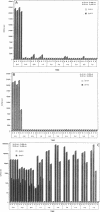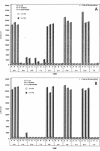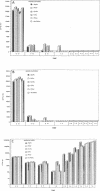Abstract
Prevention of nosocomial urinary tract infections by iontophoresis is addressed. An iontophoretic generator was used to provide microamperage (10 to 400 microA) to vials containing either synthetic urine or supplemented synthetic urine. Bacteria were added to vials, and parameters of growth, bacterial killing, and multiple electrode materials were examined. Escherichia coli and Proteus species were both inhibited and killed at various microamperages and with several electrode types, the most efficient being gold-gold as the anode-cathode combination. Klebsiella pneumoniae in supplemented synthetic urine was least inhibited in growth, and higher microamperage (200 to 400 microA) was most effective in killing the bacteria. Bacterial growth reduction and killing were directly related to increasing microamperage and were inversely related to bacterial concentration.
Full text
PDF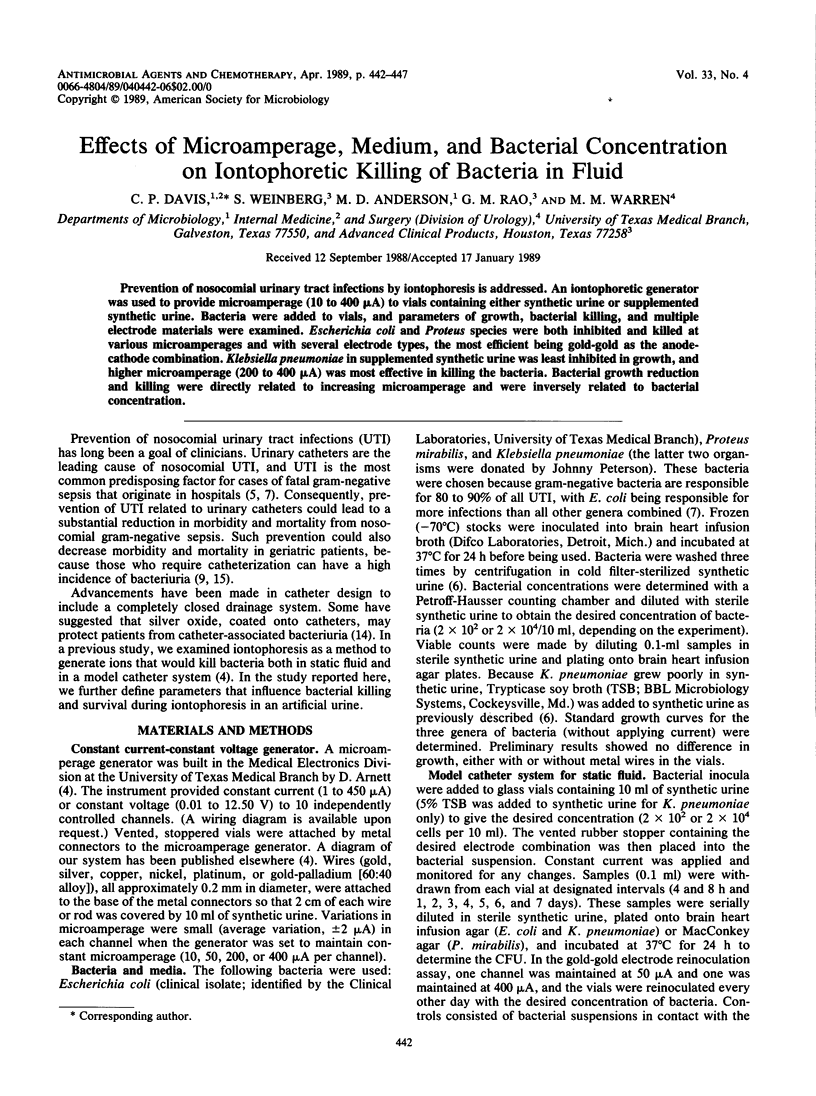
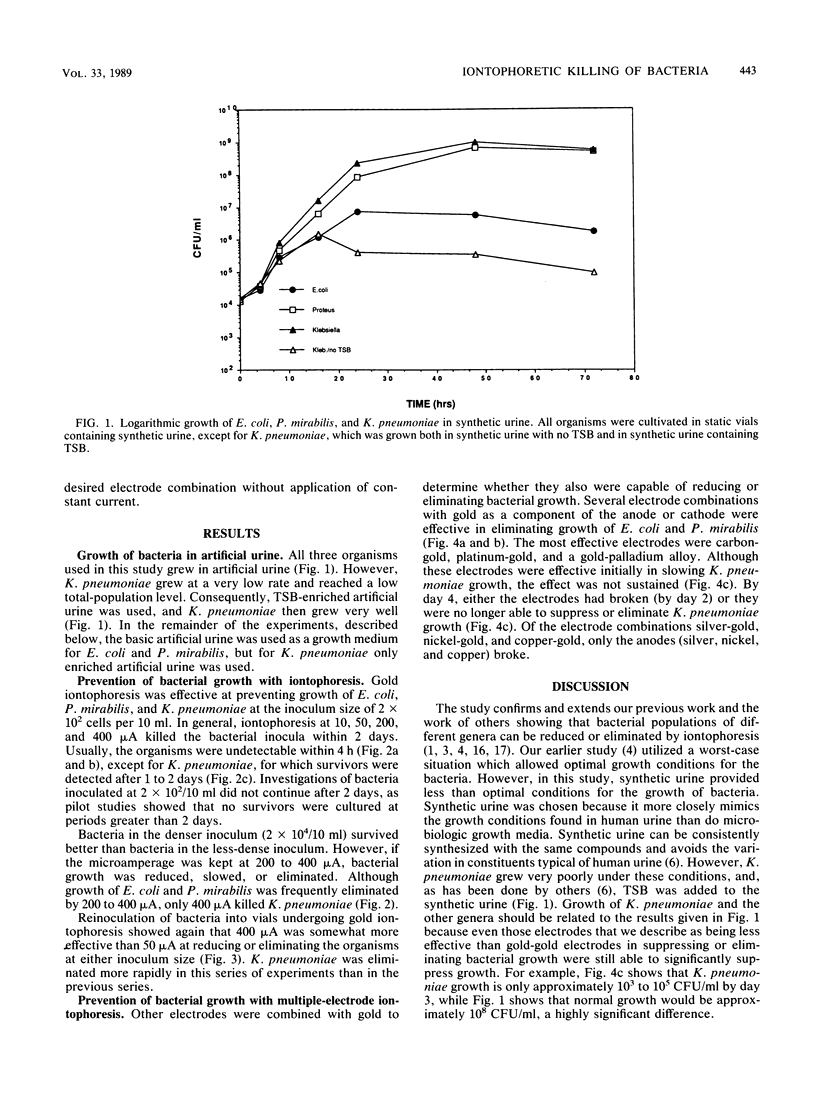
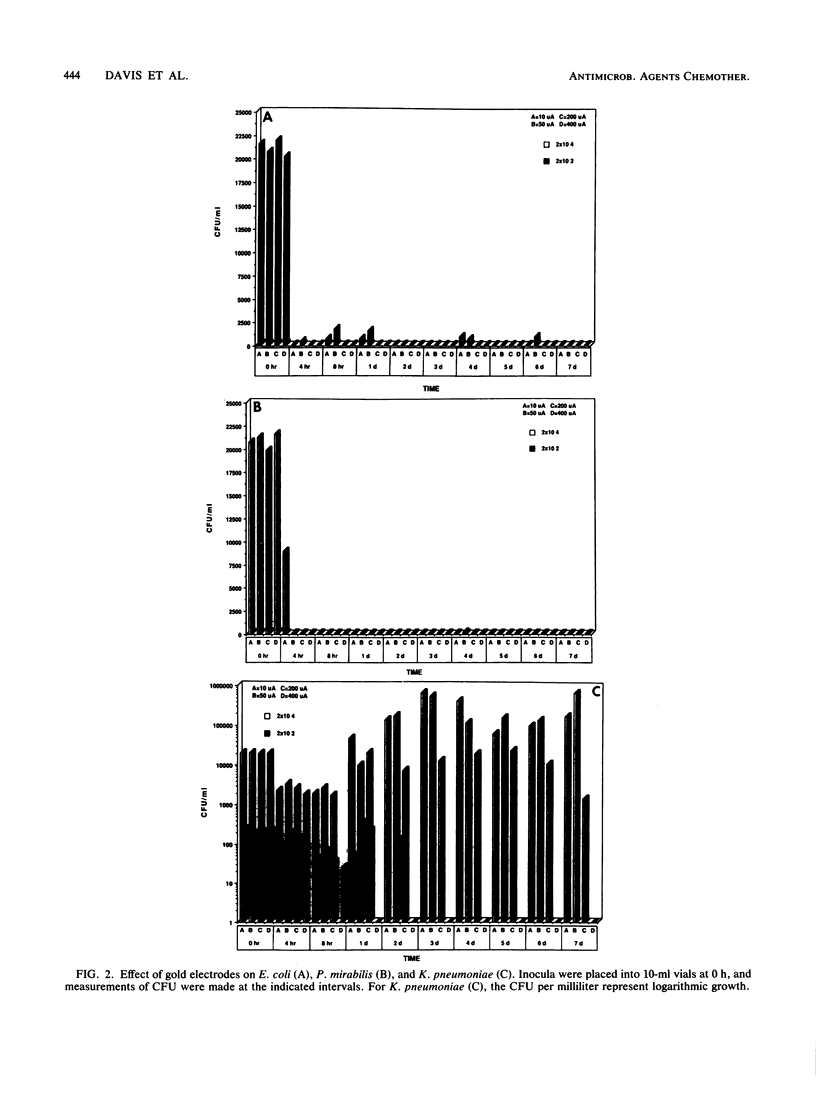
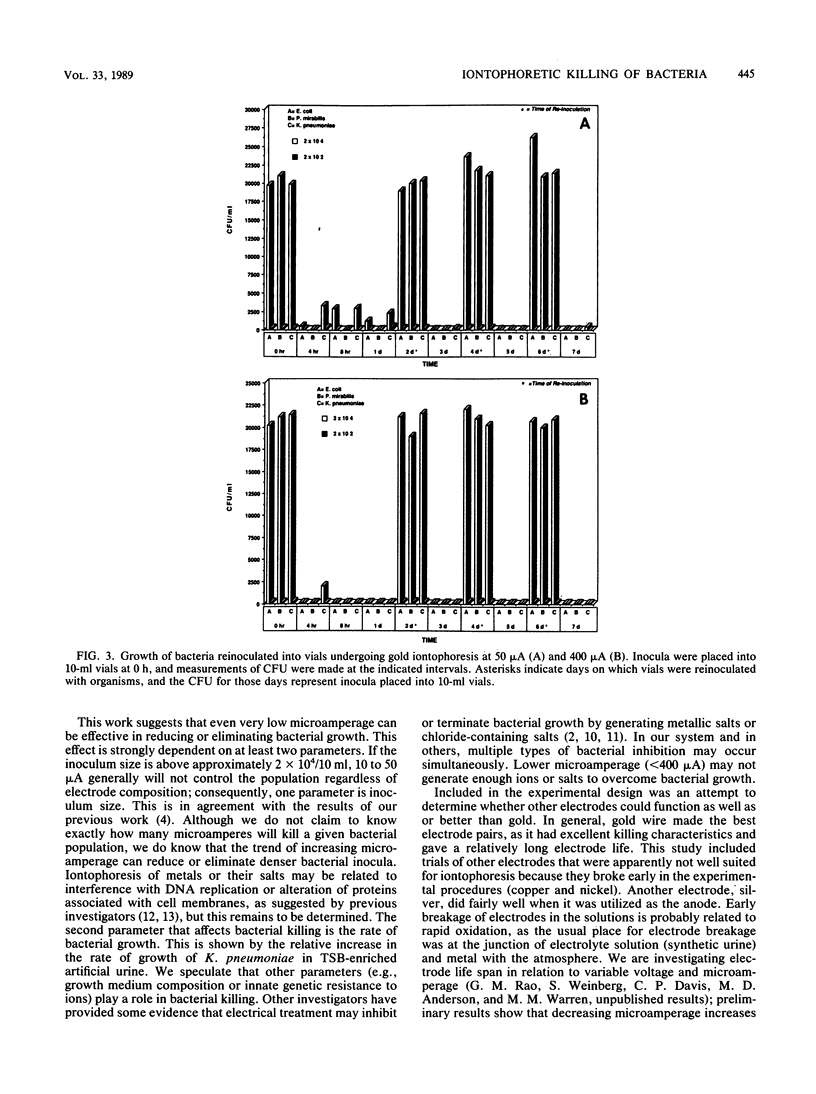
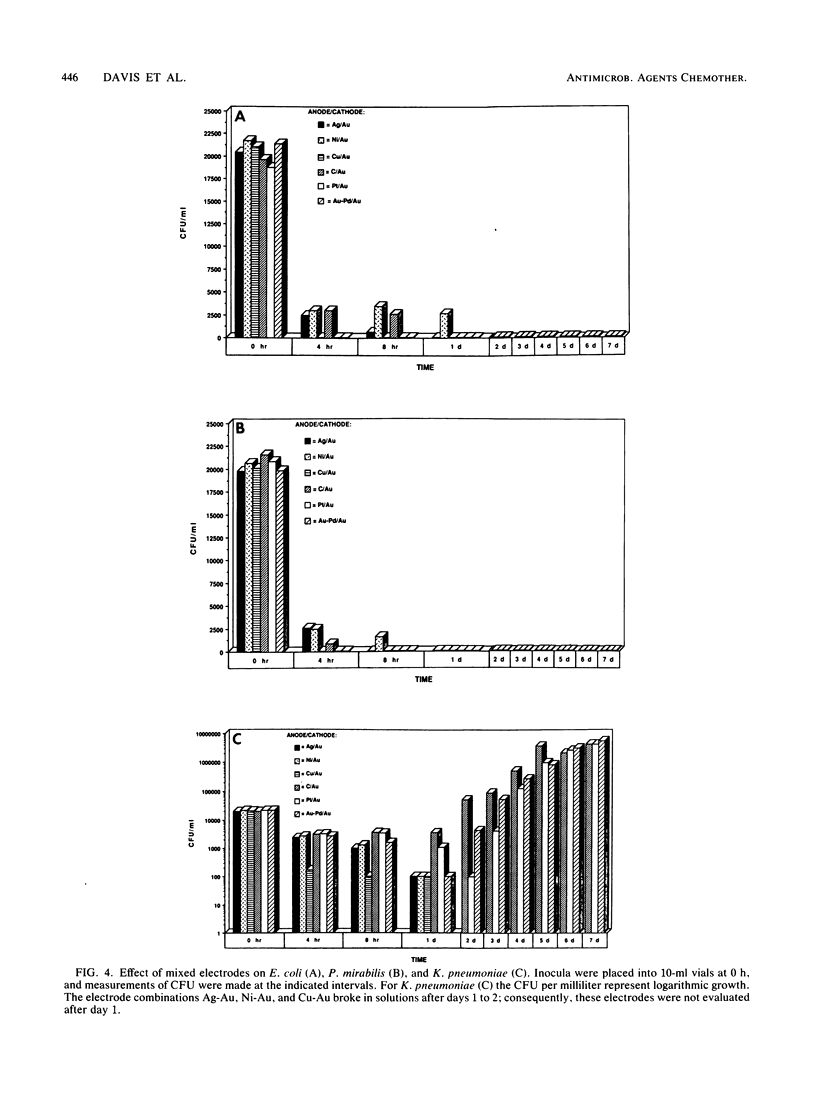
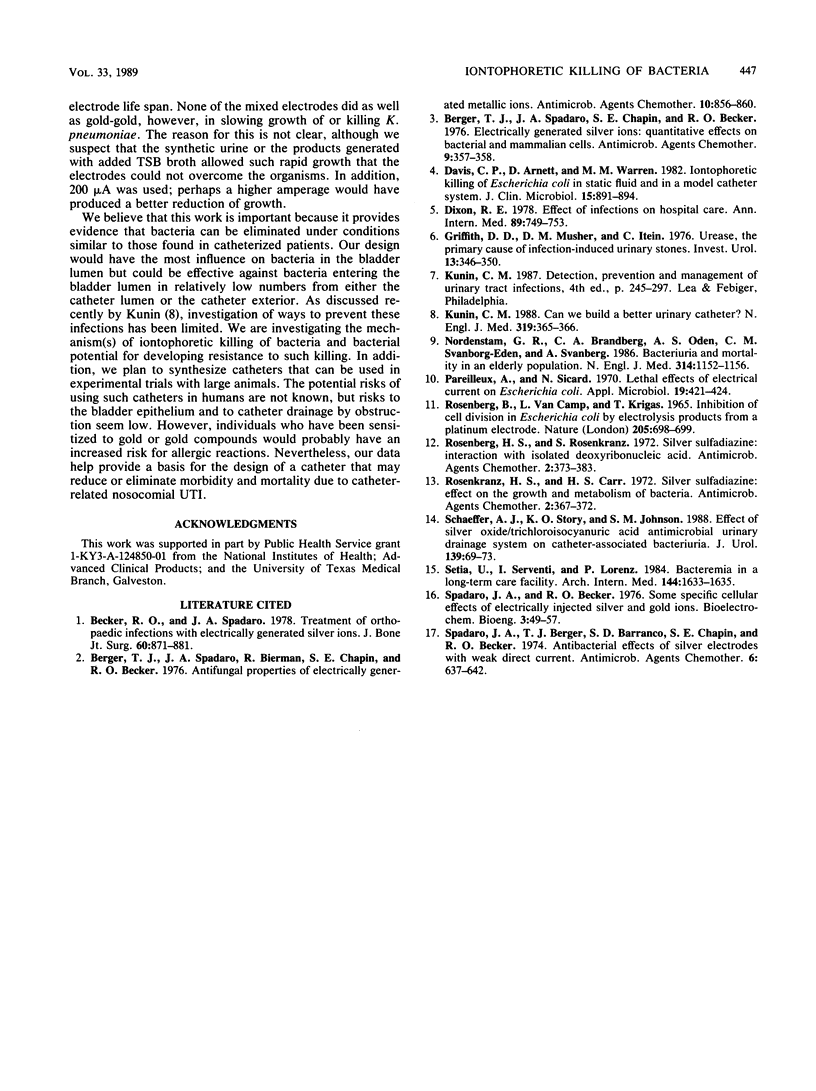
Images in this article
Selected References
These references are in PubMed. This may not be the complete list of references from this article.
- Becker R. O., Spadaro J. A. Treatment of orthopaedic infections with electrically generated silver ions. A preliminary report. J Bone Joint Surg Am. 1978 Oct;60(7):871–881. [PubMed] [Google Scholar]
- Berger T. J., Spadaro J. A., Bierman R., Chapin S. E., Becker R. O. Antifungal properties of electrically generated metallic ions. Antimicrob Agents Chemother. 1976 Nov;10(5):856–860. doi: 10.1128/aac.10.5.856. [DOI] [PMC free article] [PubMed] [Google Scholar]
- Berger T. J., Spadaro J. A., Chapin S. E., Becker R. O. Electrically generated silver ions: quantitative effects on bacterial and mammalian cells. Antimicrob Agents Chemother. 1976 Feb;9(2):357–358. doi: 10.1128/aac.9.2.357. [DOI] [PMC free article] [PubMed] [Google Scholar]
- Davis C. P., Arnett D., Warren M. M. Iontophoretic killing of Escherichia coli in static fluid and in a model catheter system. J Clin Microbiol. 1982 May;15(5):891–894. doi: 10.1128/jcm.15.5.891-894.1982. [DOI] [PMC free article] [PubMed] [Google Scholar]
- Dixon R. E. Effect of infections on hospital care. Ann Intern Med. 1978 Nov;89(5 Pt 2 Suppl):749–753. doi: 10.7326/0003-4819-89-5-749. [DOI] [PubMed] [Google Scholar]
- Griffith D. P., Musher D. M., Itin C. Urease. The primary cause of infection-induced urinary stones. Invest Urol. 1976 Mar;13(5):346–350. [PubMed] [Google Scholar]
- Kunin C. M. Can we build a better urinary catheter? N Engl J Med. 1988 Aug 11;319(6):365–366. doi: 10.1056/NEJM198808113190609. [DOI] [PubMed] [Google Scholar]
- Nordenstam G. R., Brandberg C. A., Odén A. S., Svanborg Edén C. M., Svanborg A. Bacteriuria and mortality in an elderly population. N Engl J Med. 1986 May 1;314(18):1152–1156. doi: 10.1056/NEJM198605013141804. [DOI] [PubMed] [Google Scholar]
- Pareilleux A., Sicard N. Lethal effects of electric current on Escherichia coli. Appl Microbiol. 1970 Mar;19(3):421–424. doi: 10.1128/am.19.3.421-424.1970. [DOI] [PMC free article] [PubMed] [Google Scholar]
- ROSENBERG B., VANCAMP L., KRIGAS T. INHIBITION OF CELL DIVISION IN ESCHERICHIA COLI BY ELECTROLYSIS PRODUCTS FROM A PLATINUM ELECTRODE. Nature. 1965 Feb 13;205:698–699. doi: 10.1038/205698a0. [DOI] [PubMed] [Google Scholar]
- Rosenkranz H. S., Carr H. S. Silver sulfadiazine: effect on the growth and metabolism of bacteria. Antimicrob Agents Chemother. 1972 Nov;2(5):367–372. doi: 10.1128/aac.2.5.367. [DOI] [PMC free article] [PubMed] [Google Scholar]
- Rosenkranz H. S., Rosenkranz S. Silver sulfadiazine: interaction with isolated deoxyribonucleic acid. Antimicrob Agents Chemother. 1972 Nov;2(5):373–383. doi: 10.1128/aac.2.5.373. [DOI] [PMC free article] [PubMed] [Google Scholar]
- Schaeffer A. J., Story K. O., Johnson S. M. Effect of silver oxide/trichloroisocyanuric acid antimicrobial urinary drainage system on catheter-associated bacteriuria. J Urol. 1988 Jan;139(1):69–73. doi: 10.1016/s0022-5347(17)42295-6. [DOI] [PubMed] [Google Scholar]
- Setia U., Serventi I., Lorenz P. Bacteremia in a long-term care facility. Spectrum and mortality. Arch Intern Med. 1984 Aug;144(8):1633–1635. [PubMed] [Google Scholar]
- Spadaro J. A., Berger T. J., Barranco S. D., Chapin S. E., Becker R. O. Antibacterial effects of silver electrodes with weak direct current. Antimicrob Agents Chemother. 1974 Nov;6(5):637–642. doi: 10.1128/aac.6.5.637. [DOI] [PMC free article] [PubMed] [Google Scholar]



